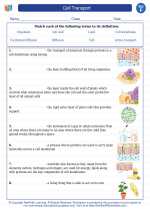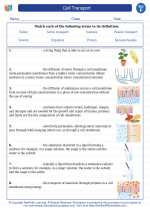Response to Stimuli
Response to stimuli is a fundamental characteristic of living organisms. It is the way living organisms react to changes in their environment, whether internal or external. This response can be observed in various forms, such as movement, growth, or even changes in metabolic activities. The process of responding to stimuli allows organisms to adapt to their surroundings and maintain homeostasis.
Types of Stimuli
Stimuli can be categorized into several types:
- Internal Stimuli: These are changes that occur within the organism's body, such as fluctuations in hormone levels, pH, or temperature.
- External Stimuli: These are changes that occur in the organism's external environment, including factors like light, temperature, sound, and touch.
Response Mechanisms
Living organisms have developed various response mechanisms to react to different stimuli:
- Tropism: This is the growth of an organism in response to a stimulus, such as plants growing towards light (phototropism) or against gravity (geotropism).
- Taxis: This is a directional movement in response to a stimulus, such as a fish swimming towards food or away from a predator.
- Reflexes: These are automatic, involuntary responses to specific stimuli, such as pulling your hand away from a hot object.
- Chemical Reactions: Some organisms respond to stimuli through chemical reactions, such as the release of hormones in response to stress.
Examples of Response to Stimuli
Here are some examples of how different organisms respond to stimuli:
- Plants: Plants exhibit tropic responses to light, gravity, and water availability. For example, they grow towards light and their roots grow towards water sources.
- Animals: Animals display various responses, such as the migration of birds in response to seasonal changes, or the opening and closing of a clam's shell in response to touch or changes in water quality.
- Humans: Humans exhibit responses to external and internal stimuli, such as shivering in response to cold temperatures, or the dilation of pupils in response to changes in light intensity.
Study Guide
When studying the topic of response to stimuli, consider the following key points:
- Understand the difference between internal and external stimuli.
- Explore the various response mechanisms exhibited by living organisms.
- Examine specific examples of response to stimuli in plants, animals, and humans.
- Consider the importance of response to stimuli in the survival and adaptation of organisms.
By understanding how living organisms respond to stimuli, we gain insights into their ability to thrive in diverse environments and maintain equilibrium within their internal systems.
.◂Science Worksheets and Study Guides Sixth Grade. Cell Transport

 Worksheet/Answer key
Worksheet/Answer key
 Vocabulary/Answer key
Vocabulary/Answer key
 Vocabulary/Answer key
Vocabulary/Answer key
